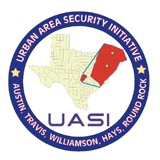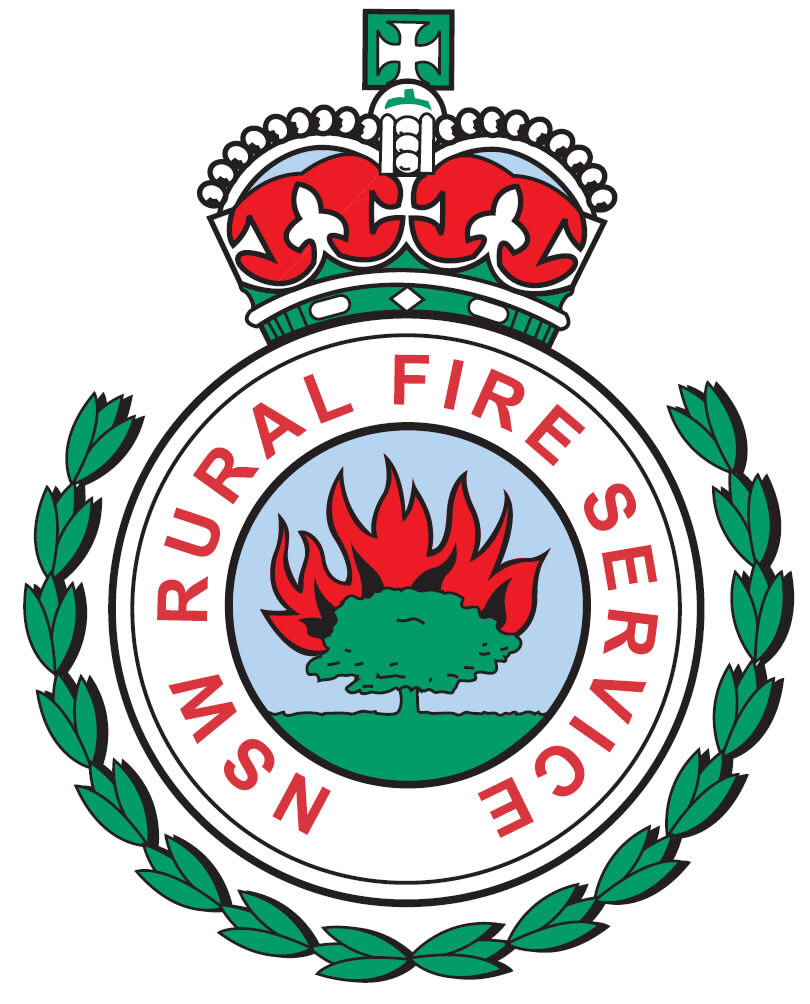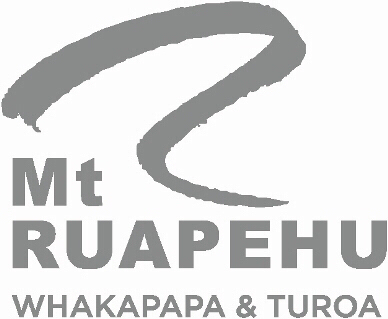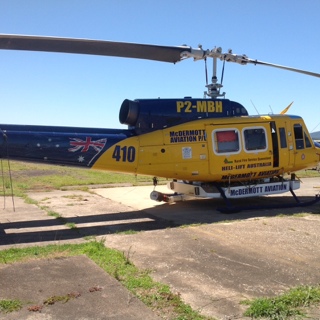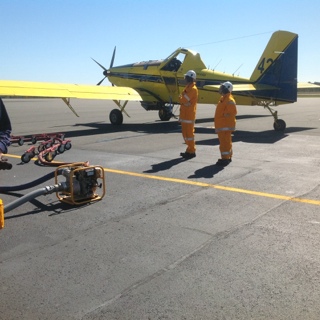Title Page
-
Conducted on
-
Location
-
Personnel
-
TYPE OF CALL
- BRUSH FIRE
- CO ALARM
- CONFINED SPACE
- HAZMAT
- HELICOPTER LANDING ZONE
- MEDICAL DISASTER
- MISSING PERSON
- MOTOR VEHICLE
- ROPE RESCUE
- STRUCTURE FIRE
- TRENCH RESCUE
- TELEMETRY LOGIN PROCEDURE
-
2718 to the Head of the Fire
-
Date and Time
-
2717 Establishes an Advantageous Anchor Point of the Fire
-
Date and Time
-
Cover All Exposures
-
Date and Time
-
Assign Deputy Command or Operations Chief
-
Date and Time
-
Water Re-Supply of Brush Trucks
-
Date and Time
-
Establish Personnel Rehab Area D3-7.1 The Incident Commander shall establish a rehabilitation sector at each incident lasting more than thirty minutes. The IC shall appoint a Rehab Group Officer at his discretion.
-
Date and Time
-
Establish Personnel Staging Area D5-3.1 A personnel staging area shall be established for all companies that do not immediately receive an assignment at an incident. The area shall be assigned by the Incident Commander and shall typically be near the incident command post. If there is no obvious command post, the staging area shall be at the location of the first-in engine.
-
Date and Time
-
Personnel Accountability D3-4.4 The Incident Commander shall appoint an Incident Personnel Accountability & Staging Officer at every 2nd and greater alarm incident. The Personnel Accountability & Staging Officer shall retrieve the accountability tags from the 1st alarm apparatus as one of his first tasks.
-
Date and Time
-
Initiate Cause & Origin Investigation C3-1.4 The Incident Commander may conduct the investigation personally, delegate it to qualified Department members, request assistance from qualified investigators from mutual aid fire departments, and/or request assistance from the Office of the State Fire Marshal Division of Arson Investigation. The Division of Arson Investigation shall be notified and requested in each of the listed circumstances. 1. A Fire Resulted in Any Fire Service or Civilian Injuries or Fatalities 2. The Cause of a Fire Is Determined by Local Investigation to be Arson 3. The Cause of a Fire Is Suspected by Local Investigation to be Arson 4. Explosive Detonation 5. A Fire Is of Undetermined Origin and Resulted In a Significant Monetary Loss
-
Date and Time
Questions to ask occupants:
-
Headache
-
A “YES” response requires an EMS evaluation by paramedics.
-
Date and Time
-
Nausea
-
A “YES” response requires an EMS evaluation by paramedics.
-
Date and Time
-
Shortness of Breath
-
A “YES” response requires an EMS evaluation by paramedics.
-
Date and Time
-
Fatigue
-
A “YES” response requires an EMS evaluation by paramedics.
-
Date and Time
-
Confusion
-
A “YES” response requires an EMS evaluation by paramedics.
-
Select date
-
Dizziness
-
A “YES” response requires an EMS evaluation by paramedics.
-
Date and Time
-
Do they feel better when away from the house?
-
A “YES” response requires an EMS evaluation by paramedics.
-
Date and Time
-
List Other Illnesses
Gas Detection Meter Checklist
-
What appliances were on at time of activation?
-
What appliances were in use for the last 24 hours?
-
Outside Reading PPM
-
Upon Entering PPM
-
Space Heater PPM
-
Hot Water Heater PPM
-
Gas Refrigerator PPM
-
Stove / Oven PPM
-
Gas Dryer PPM
-
Garage PPM
-
Furnace PPM
-
Chimney PPM
-
Fireplace PPM
-
CO Detector PPM
CO Detector Information
-
Serial Number
-
Brand of Detector
- First Alert
- Honeywell
- Kidde
- Nest
- Nighthawk
- Other
-
Brand Name
-
Model
Size Up / Assessment
-
Establish Command Post & Level One Staging Location • F2-1.2 Organize KVTF Personnel • D5-3.1 A personnel staging area shall be established for all companies that do not immediately receive an assignment at an incident. The area shall be assigned by the Incident Commander and shall typically be near the incident command post.
-
Date and Time
-
Assign Deputy Command/Operations
-
Date and Time
-
Assign Safety Officer • D3-2.1 The Incident Commander shall appoint an Incident Safety Officer at each incident with more than three companies operating.
-
Date and Tim,e
-
List Contents of Space
-
Is MSDS available?
-
Is there an existing permit?
-
Number of Victims
-
When were the victims last seen?
-
Is this a rescue or recovery
Isolate Hazards
-
Mechanical Hazards
-
Hazard has been blocked or disconnected
-
Electrical Hazards
-
Hazard has been locked out and tagged or disconnected.
-
Pneumatic Hazards
-
Hazards has been locked out, tagged, and bled or disconnected.
-
Hydraulic Hazards
-
Hazards has been locked out, tagged, and bled or disconnected.
-
Temperature Hazard
-
Start Ventilation
-
Engulfment Hazards
-
Reduce the hazards of engulfment.
-
Eliminate the ignition sources.
Operation Check List All items below must be complete this before entry.
-
Confirm that lock-out, tag-out has been done.
-
Date and Time
-
Completion of Site Safety & Control Plan (ICS 208 form)
-
Date and Time
-
If needed, has rope rigging has been set up.
-
Date and Time
-
Ignition sources have been eliminated.
-
Date and Time
-
Provide lighting if needed.
-
Date and Time
-
Continue atmospheric monitoring.
-
Date and Time
-
Continue ventilation if needed.
-
Date and Time
-
Personal protective equipment has been provided.
-
Radio channel: (only use VHF or SOA channels)
- RED
- White
- Blue
- Gold
- Black
- SOA 1
- SOA 2
- SOA 3
- Other
-
Name of Radio Channel
-
All rescuers and victims must have retrieval lines.
-
Victim packaging is available .
- Stokes
- Half Back
- SKED
- Harness
- Reeves Sleeve
- Yates
- Other
-
What is the name of the victim packaging device?
-
Provided respiratory protection for rescuers and victims (SCBA or Supplied Air).
-
Date and Time
-
Assign RIT Team • E1-2.1 A rapid intervention crew consisting of at least two firefighters that are equipped with complete protective gear and tools shall be available for emergency rescue operations when firefighters are operating at structural fire incidents. The first arriving mutual aid company shall typically be assigned to this function when possible.
-
Date and Time
-
Decon line has been set up if needed. • F2-6.1 Establish a decontamination corridor if an NFPA 704 Health Hazard of 2 or more are present.
-
Date and Time
-
Pre-entry safety briefing has taken place.
-
Date and Time
-
Completion of Site Safety & Control Plan (ICS 208)
-
Time and Date
-
Log Weather Information
-
Time and Date
-
Look Up Known Hazardous Materials in Reference Manuals (minimum of three references)
-
Time and Date
-
Reference Pre-Incident Plans and Other Mapped Information
-
Date and Time
-
Approach the Scene and Stage Upwind/Uphill
-
Establish Command Post & Level One Staging Location • F2-1.2 Organize KVTF Personnel • D5-3.1 A personnel staging area shall be established for all companies that do not immediately receive an assignment at an incident. The area shall be assigned by the Incident Commander and shall typically be near the incident command post.
-
Date and Time
-
Assign Deputy Command/Operations
-
Date and Time
-
Assign Safety Officer • D3-2.1 The Incident Commander shall appoint an Incident Safety Officer at each incident with more than three companies operating.
-
Date and Time
-
Confirm Product Identification
-
Date and Time
-
Establish an Initial Isolation Zone and begin any necessary evacuation. • Request law enforcement assistance with civilian evacuation and isolation zone maintenance. • Request EMA assistance with evacuee shelters.
-
Date and Time
-
Establish Control Zones- Hot, Warm, and Cold
-
Date and Time
-
Air Sampling/Monitoring Started
-
Date and Time
-
Assign a Response Level • Level I- An incident which can be controlled by the initial responding compliment of personnel and apparatus. • Level II- An incident which involves a greater hazard than a Level I or which poses a potential threat to life or property. This incident may require a limited evacuation of surrounding areas. • Level III- An incident involving a severe hazard or large area. This incident poses an extreme risk to life and property and will most likely require large scale evacuations and/or multi-agency response.
-
Response Level
-
Strike a 2nd Alarm on the Hazardous Materials Response Call Type for a Level II or Level III Incident
-
Date and Time
-
Emergency Notification to the Facility Owner/Occupant or Material Shipper
-
Date and Time
-
Do any of the flowing conditions exist?
- • A member of the general public is killed or hospitalized.
- • A radiological or etiological agent is involved.
- • Any portion of the general public is evacuated.
- • A release occurs which may equal or exceed the Reportable Quantity for any designated material.
- • A spill contaminates or threatens to contaminate surface waters.
- • A placarded container is damaged to the point where a release is likely to occur that could cause any of the above criteria to be met.
- • A placarded motor vehicle has overturned on a public highway.
- • A rail car containing hazardous materials has sustained or may sustain visible damage as a result of an accident.
-
Notify The Illinois Emergency Management Agency @ 217/782-7860.
-
Date and Time
-
• Confirm that IEMA will contact The Illinois Environmental Protection Agency and have a field representative make an emergency response to the scene.
-
Victim Rescue • F2-5.2 KVTF Personnel Make Assessment per Hazmat IQ System
-
Date and Time
-
Assign RIT Team • E1-2.1 A rapid intervention crew consisting of at least two firefighters that are equipped with complete protective gear and tools shall be available for emergency rescue operations when firefighters are operating at structural fire incidents. The first arriving mutual aid company shall typically be assigned to this function when possible.
-
Date and Time
-
Product Control Actions
-
Date and Time
-
Emergency Decontamination • F2-6.1 Establish a decontamination corridor if an NFPA 704 Health Hazard of 2 or more are present.
-
Date and Time
-
Assign Ground Contact- IREACH Frequency on the VHF System
-
Date and Time
-
100’ x 100’ LZ
-
Avoid Brush Taller Than Knee High
-
Firm and Flat Surface- No More Than 5 Degree Slope
-
Clearance of Overhead Wires- Park Vehicles Under Lines If Possible
-
Shut Down Both Traffic Lanes on Roadways
-
Keep Vehicle Emergency Warning Lights On
-
Use Strobe Lights to Mark the LZ- Crossing the Headlights of Two Vehicles Can Mark the LZ Too
-
Attempt to Illuminate Wires, Trees, Poles, or Other Obstructions
-
Remove All Loose Items and Debris from the LZ
-
Patients Needing Decontamination Must Be Decontaminated Prior to Loading
-
Time and Date
-
Information Provided to the Pilot- Use Compass Directions 1. Landing Zone Description (Parking Lot, Roadway, Field) 2. Surroundings (Trees, Buildings, Fences) 3. Obstacles or Hazards (Wires, Poles, Towers) 4. Surface Winds (Calm, Light, Variable, Gusting) 5. Clearest Path of Approach
-
No Personnel Within 100’- Bystanders 200’+
-
Only Approach from the Front and Only When Signaled by the Crew
-
Hold Nothing Above the Shoulder
-
Do Not Attempt to Open or Close Aircraft Doors
-
Secure Hats and Helmets
-
Radio Announcement on Fireground Channel 1. Secure All Loose Items Including Hats and Helmets 2. Do Not Give Hand or Light Signals 3. Only Approach the Aircraft From the Front and Only When Signaled by the Crew
-
Consult the On-Scene Medical Personnel to Establish if a Mass Casualty Incident (MCI) Exists The Southwestern Illinois EMS Region’s Policy Manual categorizes a Disaster/Mass Casualty as any incident that includes any of the listed events. • Any event that will overload the Southwestern Illinois EMS System and/or receiving facilities, whether it be gradual in nature such as a pandemic influenza or sudden such as a tornado, earthquake, etc. • Any event that requires an EMS agency to contact more than one additional EMS agency for mutual aid. • Any event that requires greater than 5 ambulances. • A prolonged rescue where a victim will be entrapped 60 minutes or more. • A hazardous materials release (a chemical that is a direct life-threat to a population) with multiple patients or that involves 1 or more contaminated patients being transported to a hospital. • Any Weapons of Mass Destruction (WMD) event. • Any natural or man-made event with multiple patients (or the potential for multiple patients) that will have a prolonged EMS scene time of greater than 2 hours.
-
Date and Time
-
Strike a 4th Alarm on the Vehicle or Machinery Rescue Call Type- Special Request EMS First Responders
-
Date and Time
-
EMS Communications Shall Be Established • EMS Common 1- Primary • VHF Merci 340 (155.340)- Secondary
-
Date and Time
-
Notify the Memorial Hospital Emergency Room @ 257-5840
-
Date and Time
-
Notify CENCOM via Radio Over the Dispatch Talkback Talk Group
-
Date and Time
-
Notify Freeburg ESDA via CENCOM (Only if the Incident Lies Within the Village of Freeburg Village Limits)
-
Date and Time
-
Report the Number and Condition of Patients to Memorial Hospital and Give Updates.
-
Date and Time
-
Inquire from Memorial Hospital if the RMERT Team is responding. The RMERT Team will assume triage responsibilities upon its arrival.
-
Date and Time
-
Request Air Ambulance and Additional Ground Ambulances As Needed
-
Assign Ground Contact- IREACH Frequency on the VHF System
-
Date and Time
-
100’ x 100’ LZ
-
Avoid Brush Taller Than Knee High
-
Firm and Flat Surface- No More Than 5 Degree Slope
-
Clearance of Overhead Wires- Park Vehicles Under Lines If Possible
-
Shut Down Both Traffic Lanes on Roadways
-
Keep Vehicle Emergency Warning Lights On
-
Use Strobe Lights to Mark the LZ- Crossing the Headlights of Two Vehicles Can Mark the LZ Too
-
Attempt to Illuminate Wires, Trees, Poles, or Other Obstructions
-
Remove All Loose Items and Debris from the LZ
-
Patients Needing Decontamination Must Be Decontaminated Prior to Loading
-
Date and Time
-
Information Provided to the Pilot- Use Compass Directions 1. Landing Zone Description (Parking Lot, Roadway, Field) 2. Surroundings (Trees, Buildings, Fences) 3. Obstacles or Hazards (Wires, Poles, Towers) 4. Surface Winds (Calm, Light, Variable, Gusting) 5. Clearest Path of Approach
-
No Personnel Within 100’- Bystanders 200’+
-
Only Approach from the Front and Only When Signaled by the Crew
-
Hold Nothing Above the Shoulder
-
Do Not Attempt to Open or Close Aircraft Doors
-
Secure Hats and Helmets
-
Radio Announcement on Fireground Channel 1. Secure All Loose Items Including Hats and Helmets 2. Do Not Give Hand or Light Signals 3. Only Approach the Aircraft From the Front and Only When Signaled by the Crew
-
Date and Time
-
Establish a Medical Branch • Separate Rescue and Fire Suppression Operations from Medical Operations. • Appoint a Medical Branch Director.
-
Date and Time
-
Establish a Triage Group under the Medical Branch • Appoint a Triage Officer
-
Date and Time
Age
Medical Condition
Number of Subjects
Weather Profile
Equipment Profile
Subject Experience Profile
Terrain and Hazards Profile
History
-
Add up the sum of the questions and compare it with the chart below.
Appropriate Response to Urgency Ratings
Factor Sum Response
8-12 Emergency Response
13-18 Measured Response
19-24 Evaluated Response
25-27 Search Situation or Missing Person -
Apparatus Approach & Placement G3-1.2 Engine/Rescue 2711 shall respond directly to the scene and set up in the warm zone. G3-1.3 Brush/Rescue 2718 shall respond directly to the scene but the company officer may want to consider an alternate route allowing approach from the opposite direction. On arrival the company shall stage in the warm zone.
-
Date and Time
-
Assess Hazards- Utilities, Fuel, Airbag Deployment
-
Date and Time
-
Lookup Hazards- Utilize the EX App to Identify Vehicle Hazards
-
Establish Rescue Priorities & Numbers
-
Consult the On-Scene Medical Personnel to Establish if a Mass Casualty Incident (MCI) Exists The Southwestern Illinois EMS Region’s Policy Manual categorizes a Disaster/Mass Casualty as any incident that includes any of the listed events. • Any event that will overload the Southwestern Illinois EMS System and/or receiving facilities, whether it be gradual in nature such as a pandemic influenza or sudden such as a tornado, earthquake, etc. • Any event that requires an EMS agency to contact more than one additional EMS agency for mutual aid. • Any event that requires greater than 5 ambulances. • A prolonged rescue where a victim will be entrapped 60 minutes or more. • A hazardous materials release (a chemical that is a direct life-threat to a population) with multiple patients or that involves 1 or more contaminated patients being transported to a hospital. • Any Weapons of Mass Destruction (WMD) event. • Any natural or man-made event with multiple patients (or the potential for multiple patients) that will have a prolonged EMS scene time of greater than 2 hours.
-
Date and Time
-
Is this a medical disaster or mass casualty incident
-
Strike a 4th Alarm on the Vehicle or Machinery Rescue Call Type- Special Request EMS First Responders
-
Date and Time
-
EMS Communications Shall Be Established • EMS Common 1- Primary • VHF Merci 340 (155.340)- Secondary
-
Date and Time
-
Notify the Memorial Hospital Emergency Room @ 257-5840
-
Date and Time
-
Notify CENCOM via Radio Over the Dispatch Talkback Talk Group
-
Date and Time
-
Notify Freeburg ESDA via CENCOM (Only if the Incident Lies Within the Village of Freeburg Village Limits)
-
Date and Time
-
Report the Number and Condition of Patients to Memorial Hospital and Give Updates.
-
Date and Time
-
Inquire from Memorial Hospital if the RMERT Team is responding. The RMERT Team will assume triage responsibilities upon its arrival.
-
Date and Time
-
Establish a Medical Branch • Separate Rescue and Fire Suppression Operations from Medical Operations. • Appoint a Medical Branch Director
-
Date and Time
-
Establish a Triage Group under the Medical Branch • Appoint a Triage Officer • The Triage Officer is responsible for identification and triage of all victims. He/she will establish a casualty collection point if the nature of the event dictates that casualties would be best served by being brought to one concise point for triage (whether due to relatively large geographic area or for scene safety).
-
Date and Time
-
Establish a Treatment Group under the Medical Branch • Appoint a Treatment Officer • The Treatment Officer is responsible for establishing treatment areas if not already done and may delegate an individual to supervise each treatment area (RED/YELLOW/GREEN).
-
Date and Time
-
Establish a Transport Group under the Medical Branch • Appoint a Transport Officer • After initial contact with the Medical Branch Director, the Transport Officer is the only person to remain in radio contact with Memorial Hospital regarding patient destination decisions. The Transport Officer shall be identified to Memorial Hospital as soon as possible, as well as a reliable means of communication. The Transport Officer shall be Memorial Hospital’s contact person in the field. The Medical Branch Director may continue to contact the Resource Hospital for administrative needs/concerns, to request additional EMS resources, etc.
-
Date and Time
-
Establish a Patient Tracking/Accountability Group under the Medical Branch • Appoint a Patient Tracking/Accountability Officer • The function of the Accountability Officer will be to maintain accountability of all EMS personnel operating on scene and all patients, including their ultimate destination.
-
Date and Time
-
Notify Memorial Hospital When the Last Patient Is Transported
-
Date and Time
-
Is an air ambulance and additional ground ambulances needed?
-
Request Air Ambulance and Additional Ground Ambulances As Needed
-
Date and Time
-
100’ x 100’ LZ
-
Avoid Brush Taller Than Knee High
-
Firm and Flat Surface- No More Than 5 Degree Slope
-
Clearance of Overhead Wires- Park Vehicles Under Lines If Possible
-
Shut Down Both Traffic Lanes on Roadways
-
Keep Vehicle Emergency Warning Lights On
-
Use Strobe Lights to Mark the LZ- Crossing the Headlights of Two Vehicles Can Mark the LZ Too
-
Attempt to Illuminate Wires, Trees, Poles, or Other Obstructions
-
Remove All Loose Items and Debris from the LZ
-
Patients Needing Decontamination Must Be Decontaminated Prior to Loading
-
Date and Time
-
Information Provided to the Pilot- Use Compass Directions 1. Landing Zone Description (Parking Lot, Roadway, Field) 2. Surroundings (Trees, Buildings, Fences) 3. Obstacles or Hazards (Wires, Poles, Towers) 4. Surface Winds (Calm, Light, Variable, Gusting) 5. Clearest Path of Approach
-
No Personnel Within 100’- Bystanders 200’+
-
Only Approach from the Front and Only When Signaled by the Crew
-
Hold Nothing Above the Shoulder
-
Do Not Attempt to Open or Close Aircraft Doors
-
Secure Hats and Helmets
-
Radio Announcement on Fireground Channel 1. Secure All Loose Items Including Hats and Helmets 2. Do Not Give Hand or Light Signals 3. Only Approach the Aircraft From the Front and Only When Signaled by the Crew
-
Vehicle Stabilization
-
Date and Time
-
Rescue Tool Deployment
-
Date and Time
-
Deploy Fire Protection
-
Date and Time
-
Scene Lighting
-
Report EMS on the Scene
-
Date and Time
-
Report Patients Extricated and In the Hands of EMS
-
Date and Time
-
Report Law Enforcement on the Scene
-
Date and Time
-
Report Tow Service on the Scene
-
Date and Time
-
Is a personnel rehab area needed?
-
Establish Personnel Rehab Area D3-7.1 The Incident Commander shall establish a rehabilitation sector at each incident lasting more than thirty minutes. The IC shall appoint of a Rehab Group Officer at his discretion.
-
Date and Time
-
Is a personnel staging area needed?
-
Establish Personnel Staging Area D5-3.1 A personnel staging area shall be established for all companies that do not immediately receive an assignment at an incident. The area shall be assigned by the Incident Commander and shall typically be near the incident command post. If there is no obvious command post, the staging area shall be at the location of the first-in engine.
-
Date and Time
-
Confirm KV Task Force Notification
-
Date and Time
-
Establish Command Post & Level One Staging Location • F2-1.2 Organize KVTF Personnel • D5-3.1 A personnel staging area shall be established for all companies that do not immediately receive an assignment at an incident. The area shall be assigned by the Incident Commander and shall typically be near the incident command post.
-
Date and Time
-
Appoint Operations Chief Qualified to the Level of the Incident
-
Date and Time
-
Assign Safety Officer • D3-2.1 The Incident Commander shall appoint an Incident Safety Officer at each incident with more than three companies operating.
-
Date and Time
-
Determination of the Scope, Magnitude, and Nature of Incident
-
The Exact Location of Incident
-
Is this a rescue or a recovery?
-
Date and Time
-
Available and Needed Resources- Consider 2nd Alarm Response
-
Identification of Scene Access
-
Identification of Environmental Factors
-
Determine the Ability to Contact Victim
-
Identify and Remove Hazards
-
Rescue patient and turn them over to EMS for evaluation.
-
Date and Time
-
Engine & Aerial Placement E2-2.4 The ladder/tower shall respond directly to the fire scene and park, if possible, in a position allowing aerial operation from two sides of the building.
-
Primary Search Initiated
-
Date and Time
-
Primary Search/Rescue Completed
-
Date and Time
-
Is the fire attack offensive or defensive?
-
E3-2.3 Hose lines of 1¾” in diameter shall typically be used on structure fires where suppression operations are in offensive mode.
-
E3-2.3 Although hose lines of 1¾” in diameter may be used, hose lines of 2½” in diameter shall typically be used when structural fire suppression operations are in defensive mode.
-
Assign Deputy Command/Operations
-
Date and Time
-
Water Supply E2-2.3 If 2711 has not laid its own supply line and smoke is showing, 2717 shall lay a four-inch supply line to a nearby hydrant or static water source and establish water supply. It shall be at the engineer's discretion about whether to relay pump to 2711 but if there is any doubt, always relay.
-
Date and Time
-
Is there a sprinkler system in this building?
-
Fire Department Connection E3-9.1 Engine/Tanker 2717 shall proceed directly to the sprinkler system fire department connection and identify the most appropriate hydrant available for water supply. If there is smoke showing or a confirmed fire, 2717 shall establish water supply by forward hose lay and charge the sprinkler system at 150 psi.
-
Check & Cover Exposures
-
Date and Time
-
Assign Safety Officer D3-2.1 The Incident Commander shall appoint an Incident Safety Officer at each incident with more than three companies operating. The first arriving mutual aid Chief Officer shall typically be assigned as Incident Safety Officer.
-
Date and Time
-
Assign RIT Team E1-2.1 A rapid intervention crew consisting of at least two firefighters that is equipped with complete protective gear and tools shall be available for emergency rescue operations when firefighters are operating at structural fire incidents. The first arriving mutual aid company shall typically be assigned to this function when possible.
-
Date and Time
-
Secondary Search Initiated
-
Date and Time
-
Secondary Search Completed
-
Date and Time
-
Exterior Lighting
-
Establish Personnel Rehab Area D3-7.1 The Incident Commander shall establish a rehabilitation sector at each incident lasting more than thirty minutes. The IC shall appoint of a Rehab Group Officer at his discretion. D3-6.1 New Athens EMS and MedStar EMS shall be assigned to all second alarm incidents and all hazardous materials incidents for stand-by and to assist with firefighter rehab. EMS shall be summoned for standby at any other time at the discretion of the Incident Commander.
-
Date and Time
-
Establish Personnel Staging Area D5-3.1 A personnel staging area shall be established for all companies that do not immediately receive an assignment at an incident. The area shall be assigned by the Incident Commander and shall typically be near the incident command post. If there is no obvious command post, the staging area shall be at the location of the first-in engine.
-
Date and Time
-
Personnel Accountability D3-4.4 The Incident Commander shall appoint an Incident Personnel Accountability & Staging Officer at every 2nd and greater alarm incident. The Personnel Accountability & Staging Officer shall retrieve the accountability tags from the 1st alarm apparatus as one of his first tasks.
-
Date and Time
-
Is the MSA Telemetry system needed?
-
Are you using the Telemetry system on 2711 or 2719
-
Confirm that iPad is connected to apparatus wireless network on 2711, if not go to settings on iPad and select apparatus wireless network. If network isn’t listed, on iPad turn Wi-Fi off, then back on and the network should appear*.
-
The telemetry unit needs to be powered up by turning on the switch inside cab and the MSA A1 program needs to be opened on the computer in the cab.
-
Confirm that iPad is connected to apparatus wireless network on 2719, if not go to settings on iPad and select apparatus wireless network. If network isn’t listed, on iPad turn Wi-Fi off, then back on and the network should appear*.
-
*If prompted for login credentials for apparatus wireless the user name and password for the respective wireless networks is the apparatus number repeated two times so 2711 USER and PW is 27112711 and 2719 USER and PW is 27192719
-
Exit iPad settings
-
Open RD client and select appropriate Telemetry desktop (2711 or 2719) at the “Credentials” pop-up select DONE (upper right)
• Selecting the “Save user & PW” may not prevent this pop-up from reoccurring at each login. -
At the REJECT/ACCEPT prompt select ACCEPT
• Note: selecting “Don’t ask me again” may stop the REJECT/ACCEPT pop-up from appearing. -
SCBA’s are grouped by default according to apparatus number they were removed from
-
Ventilation
-
Date and Time
-
Utility Companies Notification
-
Date and Time
-
Control of Utilities
-
Date and Time
-
Report Fire Under Control
-
Date and Time
-
Assess CO Levels E1-3.1 At structural fire incidents, the Incident Commander shall assign one company to monitor air quality within the structure after fire control is achieved and during the overhaul and salvage process. Firefighters may discontinue use of SCBA only when air monitoring indicates no dangerous levels of carbon monoxide or other gases are present.
-
Date and Time
-
Interior Lighting
-
Assign Salvage Operations E3-10.1 Salvage operations in structures shall commence as soon as a fire is considered under control, the building is determined to be sound, and companies are available.
-
Date and Time
-
Initiate Cause & Origin Investigation C3-1.4 The Incident Commander may conduct the investigation personally, delegate it to qualified Department members, request assistance from qualified investigators from mutual aid fire departments, and/or request assistance from the Office of the State Fire Marshal Division of Arson Investigation. The Division of Arson Investigation shall be notified and requested in each of the listed circumstances. 1. A Fire Resulted in Any Fire Service or Civilian Injuries or Fatalities 2. The Cause of a Fire Is Determined by Local Investigation to be Arson 3. The Cause of a Fire Is Suspected by Local Investigation to be Arson 4. Explosive Detonation 5. A Fire Is of Undetermined Origin and Resulted In a Significant Monetary Loss
-
Date and Time
-
Confirm KV Task Force Notification
-
Available and Needed Resources- Consider 2nd Alarm Response
-
Limit Access to the Trench
-
Do NOT Allow Personnel to Enter the Trench
-
Approach the Trench from Ends to Recon
-
Place a Ladder in the Trench for Victims to Self-Rescue
-
Beware Of Secondary Collapses
-
Stop All Sources of Vibration within 300’
-
Set Up Ground Pads to Stand On Around the Trench Lip
-
Move Spoils Pile At Least 2’ Back From the Trench Lip
-
Locate the Victims’ Position
-
Mark the Victims’ Location- Score Ground on Both Sides
-
Estimate or Measure Depth of the Victims
-
Interview Co-Workers to Determine the Victims’ Last Position
-
Appoint Operations Chief & Safety Officer- Qualified to the Level of the Incident
-
Date and Time
-
Are you using the Telemetry system on 2711 or 2719
-
Confirm that iPad is connected to apparatus wireless network on 2711, if not go to settings on iPad and select apparatus wireless network. If network isn’t listed, on iPad turn Wi-Fi off, then back on and the network should appear*.
-
The telemetry unit needs to be powered up by turning on the switch inside cab and the MSA A1 program needs to be opened on the computer in the cab.
-
Confirm that iPad is connected to apparatus wireless network on 2719, if not go to settings on iPad and select apparatus wireless network. If network isn’t listed, on iPad turn Wi-Fi off, then back on and the network should appear*.
-
*If prompted for login credentials for apparatus wireless the user name and password for the respective wireless networks is the apparatus number repeated two times so 2711 USER and PW is 27112711 and 2719 USER and PW is 27192719
-
Exit iPad settings
-
Open RD client and select appropriate Telemetry desktop (2711 or 2719) at the “Credentials” pop-up select DONE (upper right)
• Selecting the “Save user & PW” may not prevent this pop-up from reoccurring at each login. -
At the REJECT/ACCEPT prompt select ACCEPT
• Note: selecting “Don’t ask me again” may stop the REJECT/ACCEPT pop-up from appearing. -
SCBA’s are grouped by default according to apparatus number they were removed from
-
Do you want to send this check list to the Freeburg Fire Dept. Administration?






